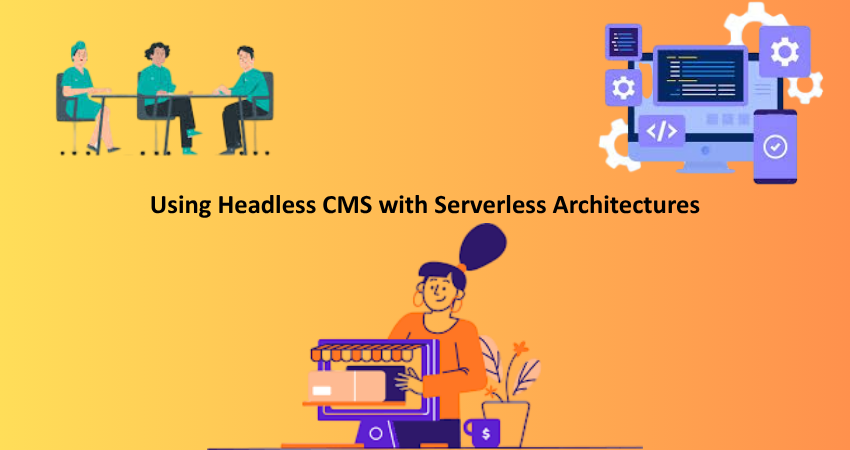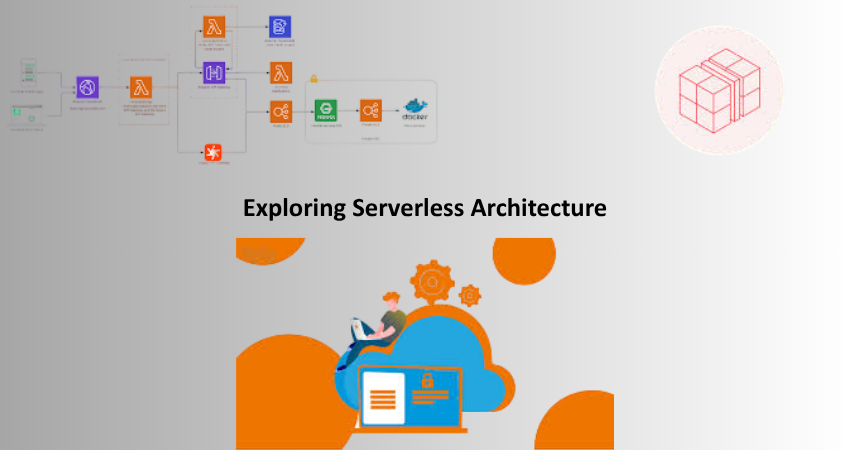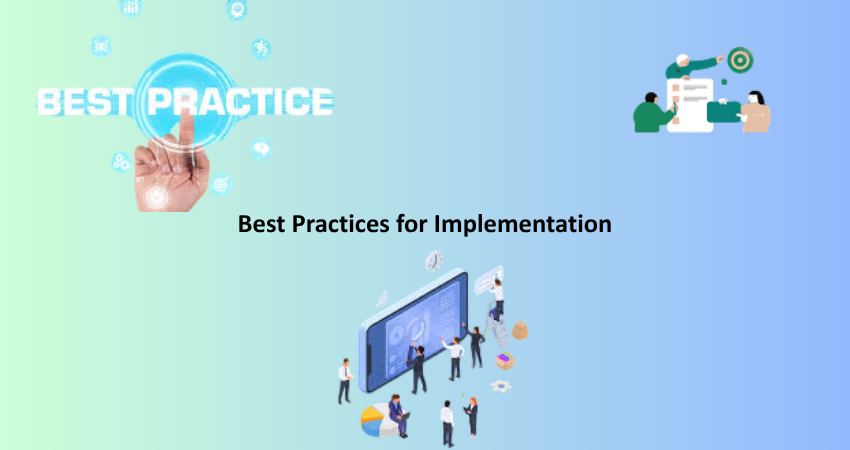
Introduction to Headless CMS and Serverless Architectures
Even as the web and app development areas develop, the need for speed, flexibility, and scalability is at its highest satiation. Traditional monolithic systems will soon be replaced with modular, cloud-based solutions that empower developers to build faster, more maintainable applications, and platform-agnostic solutions. The two most transformational technologies defining this shift are headless content management systems (CMS) and serverless architecture-strikingly complementary technologies. The combination offers a future-ready option that won’t just “lighten the development workflow but will increase overall user experience.”
Headless content management systems break the traditional content management system paradigm by actually separating the backend content repository from the frontend visual layer. Being decoupled, the developers can freely deliver this content across platforms: web, mobile, IoT, and beyond using whichever frontend framework and tools they choose. With serverless architecture, management of the backend infrastructure is basically thrown out of the window as it allows for an abstraction of server management, enabling event-driven, auto-scaling applications with the lowest possible operational overhead. Now these technologies together create a frictionless, scalable experience that is perfect for modern digital solutions.
In this article, we go in-depth about how headless CMS and serverless architecture work together to build strong applications. The tutorial will land you on basic concepts, benefits, real-world use cases, challenges in implementation, and best practices that will give you a complete understanding of why this combo is becoming a hot favorite amid developers and businesses alike. It’s time to take the leap and maximize performance, agility, and innovation in your personal blog, e-commerce system, or another app of enterprise grade.
Understanding Headless CMS
What is a Headless CMS?
Headless content management systems are content management systems that store content in the backend and serve it via APIs. This frees developers with regard to how they build and manage content repositories because the system is agnostic to a particular frontend. Unlike traditional CMS platforms such as WordPress or Joomla, in which content editing and displaying are rather coupled, and hence a headless CMS decouples the two, it would allow the flexibility in displaying content anywhere and however. This is definitely very relevant in today’s multi-channel distribution environment; delivering content across websites, mobile apps, smart devices, and much more.
Essentially, a headless content management system (CMS) treats its content as data and uses APIs to manipulate that data and content (mostly RESTful or GraphQL). This means that creators manage the assets through a CMS interface, while developers dynamically pull the content and render it using whatever front-end technology they feel would work best, such as React, Vue, or Angular. By separating these areas it brings smooth workflows, enhances scalability and facilitates consistent application of the designer systems across multiple channels. In addition, headless CMS solutions usually have a large number of extra bundled features for localization, versioning, and collaboration that help make the work of the big team a bit easier.
Benefits of a Headless CMS
An omnichannel content delivery system is one of the most significant advantages of a headless CMS. Organizations can push the same content to web pages, mobile apps, smartwatches, or digital kiosks without the need for duplicating entries for each. In this way, consistency is ensured and duplication of effort is avoided. Developers are free to work on whatever frontend stack they like, meaning that development gets ahead of time and delivers the best UI practices. Because the backend and frontend are loosely coupled, updating one does not imply risk and downtime for the other.
Another factor worth mentioning is performance fine-tuning. Headless solutions are developed in conjunction with their partner CDNs, caching API responses nearer to the end-users for rapid loading, SEO-worthy, and better user experience. Another upside is that security is elevated because the backend of the CMS is decoupled and does not directly interface with the end-users, hence limiting its exposure to attacks such as SQL injection. Finally, being headless affords a future-proof architecture that embraces easy alteration to new devices and platforms; thus, this will be sustainable into the foreseeable future.
Exploring Serverless Architecture

What is Serverless Computing?
Coud-native execution model for serverless computing where dynamic runs server provisioning and allocation by cloud provider to all… But got serious with the providers and server ownership still has to take while the programmer’s part doesn’t involve maintenance for servers for underlining the infrastructure. Instead, writing functions that are reversed by events such as HTTP requests, database changes, or uploading of files is performed. These functions are stateless, real-time, and automatically grow under demand, all these making serverless perfect for application developments to be agile and cost-efficient….
Common Serverless Platforms are AWS Lambda, Azure Functions and Google Cloud Functions. Their thing is to offer frameless coding without managing servers, operating systems or runtime environments. Other aspects of serverless applications are cloud-native services such as parallel computing, managed databases, object storage, and authentication services that together form the backend. This modular design leads to shorter development cycles, reduced operation overhead, as well as improved scalability compared with traditional server-based applications.
Advantages of Serverless Architectures
One of the key benefits of serverless computing is auto-scaling. Functions will automatically scale up in response to traffic surges and down in idle times, maximizing resource effectiveness. The effects of this pay as you go model are significantly reduced costs for applications with variable workloads. You only pay for the compute time during which your functions are executed; when they are not running, you do not pay anything. Indeed, such a model is perfect for startups and enterprises, allowing them to build sturdy applications without upfront infrastructure costs.
Serverless architecture fast and rapidly development and deployment. Because the functions are small and focused, they can be written, tested, and deployed as independent components to accelerate release cycles and ease maintenance. Developers are made to leverage managed services for logging or monitoring or authentication to reduce the burden of development even further. There are significant benefits, too, for the resilience of serverless applications since the cloud providers take care of all fault tolerance and load balancing mechanisms, thus ensuring better uptime reliability.
The Synergy: Headless CMS + Serverless
Why Combine Headless CMS with Serverless?
The combination of a headless CMS with a serverless architecture creates a digital ecosystem with maximum flexibility and scalability. The result is that headless CMS takes care of flexible content management, and serverless architecture provides an elastic infrastructure for building modern high-performance applications. A good example would be when content is served by a headless CMS via an API which is consumed by a serverless function to dynamically generate webpages or handle more complex workflows, such as personalization and content recommendations. That is the stack that ensures scalability with fast response times for smooth user experience.
Cost-efficiency and ease of scaling is another soft advantage. Since both technologies are cloud-native and API-driven, they scale independently and efficiently. Whether it’s thousands of users, or millions, the backend for serverless functions and the headless CMS will scale together without any manual intervention. This becomes increasingly important for companies that see traffic that ebbs and flows with seasonal trends or ones with an audience spread around the globe that values high availability and performance without high operating costs.
Use Cases of Headless + Serverless Integration
This combination of headless CMS and serverless architecture creates tremendous value for different scenarios. E-commerce platforms are an example where dynamic product pages are created according to the data of a headless CMS, while business logic is executed using serverless functions. When a request is made for the product page, the serverless function fetches the content and pricing data in real time to maximize personalization without compromising performance or scalability. Furthermore, the same architecture can be applied to manage carts, process orders, and update inventories.
Another potent use case is content-heavy sites or apps like news portals or educational platforms. Such sites need constant content updates and serve a vast audience around the globe. A headless CMS allows content teams to push updates without affecting the frontend, whereas serverless functions ensure speedy delivery and dynamic rendering. Serverless functions can also be used for on-the-fly image optimization, to generate SEO metadata, or collect real-time analytics—all tasks enhancing performance and user engagement.
Challenges and Considerations
Potential Drawbacks and Limitations
Nevertheless, the merging of headless CMS with serverless architecture confers several advantages and a set of challenges. The prominent challenge here is that setup and integration of the system may be complex. Developers must understand both content APIs and serverless paradigms, and this learning curve might come with additional tools and different workflows. Proper API design, authentication, and error handling are paramount because any misconfiguration may cause performance bottlenecking or link vulnerabilities. In addition, debugging and monitoring are downright hard, as the serverless architecture is a pool of functionalities falling to natural death and logs may sputter across diverse services.
Another issue is vendor lock-in. Many headless CMSs and serverless providers have a plethora of proprietary levers and services that lock you to the provider for the immediate term. While these integrations may enhance capability, they also end up creating a certain dependence which is likely to compromise flexibility in the future. Further, because serverless functions are subject to cold starts, they are usually more detrimental when not functioned optimally, which may come in the way of user experience. These issues can be addressed through best practices in performance optimization by the developers, including edge functions, caching, and lazy loading for non-critical content.
Security and Governance
Security is the very first concern while employing any architecture based on cloud native. In the case of headless CMS and serverless setups, very much important becomes API security and access control. All those API endpoints exposed by the CMS or the serverless function must be protected by authentication mechanisms such as OAuth, JWT token, or even API key. Unconfigured permissions could allow access to sensitive content or system logic to unauthorized users. Developers should also be on the lookout for some common threats such as cross-site scripting (XSS), distributed denial of service (DDoS) attacks, and injection vulnerabilities.
Governance and compliance are equally vital, especially with organizations operating in regulated industries. Maintenance of audit logs, encryption of data, and the application of role-based access codes are all necessary measures. Since serverless functions end up being widely dispersed across multiple services, a centralized monitoring and alerting system needs to be implemented. AWS CloudWatch, Datadog, or Sentry can be used to monitor metric and anomaly detection. Apart from that, version control and deployment automation are very important factors towards a quality code with consistency across environments.
Best Practices for Implementation

Designing for Performance and Scalability
There is pretty much everything one can get from a headless CMS and serverless architecture optimally built for performance. One such optimal edge-caching scheme sustains work with a CDN, such as Cloudflare or AWS CloudFront, which would cache API responses nearer to users and hence reduce latencies and loads on backend systems. Lazy loading and content pre-fetching techniques are to be enacted by a developer to provide a seamless user interaction. Static site generators, say Next.js or Gatsby for example, will be optimized in conjunction with serverless APIs to pre-render the content while also providing a dynamic behavior from client-side interactions.
Monitoring and logging is another key aspect. Since serverless functions have short lives and, at most times, run across different regions, a centralized log management system will hasten the discovery and diagnosis of issues. Incorporate structured logging and distributed tracing to track performance all along the API calls through third-party services. This visibility allows application teams to fine-tune their applications, optimize cold start times, and manage function timeouts. The design for failure can include retries, fallbacks, and graceful degradation—upholding good user experience along the way.
Optimizing Developer Workflows
The developer experience remains an important parameter for the successful implementation. The use of IaC tools such as Terraform or AWS SAM can greatly ease deployments and enforce the consistency of environments. Integrating CI/CD pipelines with version control creates an automated system where testing and deployments are performed, leading to reduced delivery cycles, and lesser risk for human error. To obtain scaling and maintenance, developers must modularize a codebase into reusable components and functions.
Documentation and collaboration tools support the editor-developer collaboration efforts, all to build great solutions. Choose a headless CMS that allows flexible content modeling, rich media, and role-based workflows. Local development should mirror production as closely as possible to avoid discrepancies. Developer tools from the CMS and serverless vendors include CLI tools, SDKs, and debugging tools that keep productivity efforts high and reduce friction during development.
Conclusion
This combination of headless CMS and serverless architecture marks a shift in how modern web applications are constructed and operated. By separating content management from presentation and transferring backend requirements on to cloud services, developers can focus on ever-innovative feature creation and value delivery to users faster than ever. It provides database scalability, application performance, and application flexibility for all those applications, starting from a small blog to an enterprise one.
This kind of setup calls for immense planning, tool provisioning, and intricate understanding of the underlying technologies. Organizations thus need to consider the pros and cons from a sustainability perspective when implementing these solutions. In their ideal form, the headless CMS together with a serverless architecture allows teams to create nimble digital experiences and near-future-ready applications that have the potential of lasting.